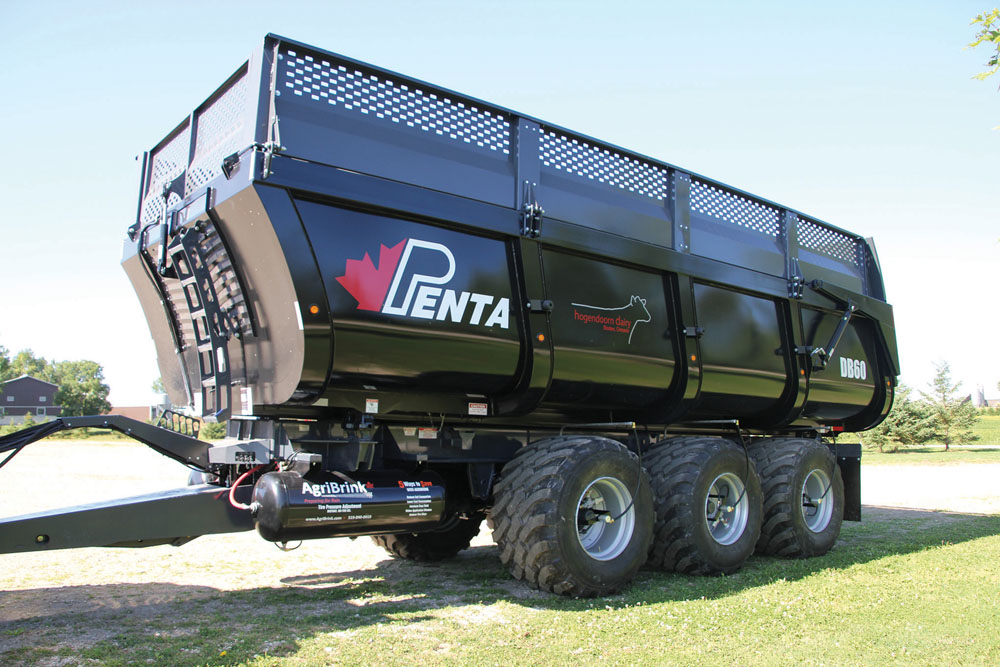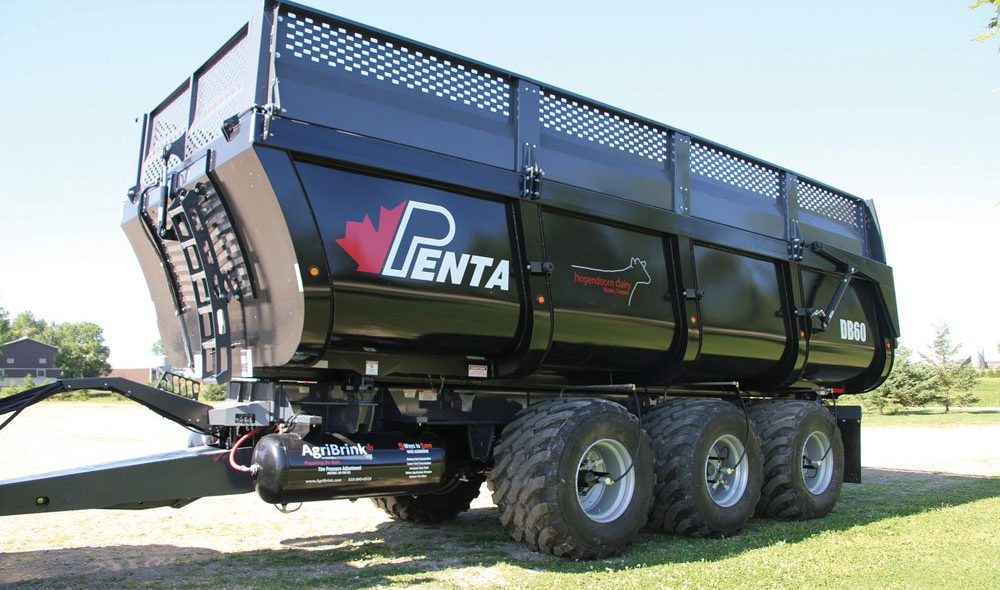You could be risking your soil health, crop yield and operating efficiency
By Madeleine Baerg
Published: April 28, 2020
Features, Machinery and Shop

Quick quiz: when was the last time you checked your equipment’s tire pressure? Very few farmers manage the recommended weekly tire pressure checks; even fewer meet the ideal of a daily pressure check. The result? Tire experts agree that almost all western Canadian farmers routinely operate at damagingly incorrect p.s.i. The results are quietly costing soil health, crop yield and operating efficiency.
“Very, very few farmers operate at the right p.s.i. A lot of them will look at the beginning of the season and say, ‘It looks a little cheeky; I’ll inflate it.’ And then that might be the last time they consider tire pressure for weeks or months,” says Jodi DeJong-Hughes, a regional extension educator with the University of Minnesota.
“We’ve found that only about five per cent of tires are at the correct pressure,” says Ontario producer, Jake Kraayenbrink, the creative mind behind the ultra-rapid, on-the-go tire pressure change system by AgriBrink. “People say they have floatation tires, but that doesn’t mean anything if they don’t change their pressure.”
Every tire is designed for a precise p.s.i. for optimal operation on specific ground. On a hard-packed, solid surface like a road, tires should be well inflated to minimize surface contact and reduce friction. However, on soft ground, tires need to be soft enough to spread a machine’s weight over the widest and longest possible footprint, though not to the point of compromising sidewall deflection.
Keeping tire pressure low in the field maximizes traction, minimizes slip and significantly drops fuel consumption. Even more importantly, lower pressure translates to significantly less soil compaction, which improves water infiltration, soil moisture-holding capacity, root growth, crop health and more, ultimately leading to more yield.
“You want the largest tire you can get and as many axles as possible,” says DeJong-Hughes. “And then you want to make sure you’re not overinflating those tires.”
Tire pressure is as, or more, important than actual equipment weight.
“A pickup truck can do more compaction damage than a 40-tonne manure tanker, because the pickup truck has small, high-pressure tires,” says Kraayenbrink.
Find that hard to believe? Consider this:
“Imagine standing on a beach in soft sand. You have your choice about who’s going to walk across your feet: a three-year-old child wearing ice skates or a 250-pound guy in bare feet. Which would you choose?” says Kraayenbrink. “You’re going to pick the 250-pound guy every time.”
Why? Intuitively, you know that the child’s weight pressing down across a very thin, very hard blade is going to hurt a whole lot more than the big guy’s softer, more spread-out pressure, despite his total weight equalling nearly ten times that of the child.
“Since 1960, we’ve gained 900 pounds each year on equipment. That’s a huge number. We have increased the footprint and tire technology but the understanding about the importance of correct tire pressure isn’t at the level needed. In Europe they see it, but that whole mindset and thinking is not in North America yet,” says Kraayenbrink.
Kraayenbrink calculates that properly inflated tires, rather than overinflated, convert to, on average, about 15 per cent higher fuel economy. Based on 1,000 operating hours per year and fuel consumption of 20 litres per hour at $1.20 per litre, he calculates a savings of $3,600 per year. Optimizing inflation also significantly increases tire longevity. However, those direct savings may prove minor compared to the yield benefits of reduced compaction.
Kraayenbrink’s rapid, tire pressure change system can deflate tires in 20 seconds and inflate them in 30 seconds, even while a machine is moving, through touch controls in the cab. Gaining popularity quickly in Europe and more recently here at home, his system is just one recent innovation in tire technology.
Finland’s Nokian Heavy Tyres recently unveiled its new Intuitu system: sensors that deliver tire pressure and temperature readings (and potentially tire tread depth too) in real time to a smartphone or, in future versions, to an on-board monitor.
Titan’s newest tire innovation is its Low Side Wall (LSW) Tire. Designed to carry weight at 40 per cent lower pressure than a standard competitive tire, the LSW tire allows lower compaction than even a correctly inflated standard tire. On a tire with an 81-inch overall diameter, a LSW has a 46-inch rim height compared with the 38-inch rim height on a standard tire. This larger rim and smaller sidewall also decrease power hop and road lope.
The one innovation farmers are less likely to see in tires designed for agricultural fields is airless tires, like the ones gaining popularity on skid-steers. Airless tires work best on stable ground and in applications where the weight on the tires doesn’t change, neither of which is the reality for tractors and combines. Also, airless technology does not allow the pressure change flexibility necessary when driving conditions change (i.e., from driving on a hard, dry road to working in a soft, wet field).
Expect more innovation coming soon as farmers and companies alike recognize the value of decreased pressure on crop yields. Remember though, not all improvements need to cost serious dollars: simply increasing your vigilance on tire pressure may be the best investment you make for your farm this year.
Source: https://www.grainews.ca/features/how-often-should-you-check-tire-pressure-and-why-does-it-matter/

